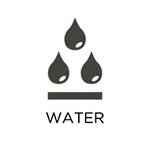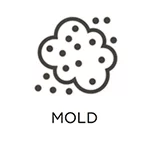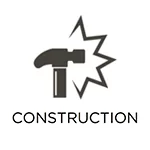RestorationMaster
Water damage is a major concern to home and business owners due to the variety of ways in which it can occur and the devastation it can cause to your building and belongings. This is particularly true for residents of Toms River, NJ, who are subjected to major storms and blizzards in addition to already common causes of water damage like burst pipes, leaks, and sewage backups. When faced with water damage, it is crucial to address it as soon as possible to mitigate damage.
If you experience water damage on your property, we encourage you to contact our RestorationMaster representatives as quickly as you can. We specialize in water damage restoration services and can help to both limit the extent of the damage, and restore your property to its original condition.
The Dangers of Water Damage
There are endless issues that can arise when water begins to seep into your home or office space. The most troubling issue is the damage that can be caused to structural elements of your building (e.g. wood, sheetrock, flooring, etc.), as well as personal and professional belongings. Warping, discoloration, swelling, and more can all occur.
Another severe issue that can arise from water damage is the growth of mold. Mold loves to grow in moist environments that also contain an organic food source (many buildings are constructed with materials that mold can feed on). Once mold catches hold in one area, it can easily spread to more, which can cause structural damage, health complications, and other troubles for you and anybody else living or working in close proximity.
The RestorationMaster Approach to Water Damage Restoration
RestorationMaster is a trusted name in water damage restoration because of our highly trained personnel and state-of-the-art water extraction and drying equipment and methodologies. Additionally, we are available 24 hours a day to respond to emergency situations, which can save you from further unnecessary damage.
To gain a better understanding of what to expect through our services, please see more details about our approach below:
- Emergency Response: As we stated above, we are available 24 hours a day for your convenience. When we arrive on-site, we will begin by containing excess water and assessing the damage to your property. We will then determine the best course of action regarding which materials must be removed and restored, what equipment to use for moisture and water extraction, and other factors. We will also set up dehumidifiers and fans to help circulate the air in your building and continue to act on our restoration plan.
- Sanitization and Reinstallation: Once affected areas have been thoroughly dried, we will proceed to clean any damaged materials and belongings. This will help to prevent mold growth, corrosion, and other negative consequences. Items and belongings may need to be shuffled around during this process, but it will help us ensure a quality cleaning. We will be sure to reinstall carpeting, furniture, and appliances once the sanitization process is complete.
- Structural Repairs: In some situations, structural elements of your building will be in need of repairs. Our RestorationMaster technicians are specifically trained to address these scenarios, and will completely restore affected flooring, ceilings, drywall, structural elements, etc.
Contact Us for Water Damage Restoration and Cleanup in Toms River, NJ

If you own a home or business that has been affected by water damage, and would like to take advantage of our water damage restoration services, simply give us a call at (732) 338-2454. RestorationMaster is open 24 hours a day to take your call and proudly services property owners in Toms River, NJ and the surrounding areas.
Related Water Damage Restoration Services
Damage Restoration Experts in Brick, NJ
Emergency Water Restoration Team in Howell, NJ
Water Removal in Manahawkin, NJ
Expert Water Mitigation in Manasquan, NJ
Water Damage Restoration Technicians in Ocean City and Egg Harbor Township, NJ
Related Water Damage Tips and Information
The Dangers of Stagnant Water and How to Remove It
The presence of stagnant water in your home or business, often resulting from a flood, can lead to significant issues if left unaddressed. Allowing the water to remain stagnant can result in extensive damage, as it permeates into your property, compromising its structural integrity. In addition to structural concerns, stagnant water can have detrimental effects on your health. It is imperative to promptly clean up stagnant water to prevent property damage and mitigate potential health risks.
The Dangers of a Flooded Basement
In the event of basement flooding, it is crucial to take immediate action to remove the water and thoroughly dry the affected areas. This prompt response is essential to prevent further damage to your property. Equally important is to take preventive measures to avoid basement flooding altogether, as this will spare you the inconvenience of dealing with cleaning up contaminated water and potential property damage. Here are some reasons why a flooded basement can pose risks and dangers.
How to Protect Your Basement from Rainwater Flooding
As a homeowner, coming across water damage in your basement can be incredibly disheartening and stressful. Not only can it result in expensive repairs, but it may also lead to the loss of personal belongings if not addressed promptly. However, by taking proper precautions, you can prevent or reduce the extent of rainwater damage to your basement and keep it dry. Let’s explore some effective strategies for protecting your basement from rainwater damage.
Frequently Asked Questions
How Long is the Drying Process for Water Damaged Homes?
It is challenging to precisely determine the duration required to dry a water-damaged home without a professional evaluation of the extent of damage. Nonetheless, you can estimate the timeframe based on the severity of the damage.
For minor water damage, the drying process typically spans around 3-5 days. This applies to situations where the water is relatively contained and hasn’t penetrated deeply into the adjacent materials. In cases of significant water damage, the process can extend to several weeks if the water has spread extensively into the affected materials. Quick response to water damage can potentially save you several days of the drying process.
How to Prevent Indoor Flooding from Storms?
1. Assess the Drainage on Your Property
2. Raise Your Home
3. Install a Sump Pump
4. Coat and Seal Foundation
5. Raise Electrical Outlets
6. Protect Pipes with Check Valves
7. Keep Mulch Away from the Siding
How to Determine if Water Damage is Fresh or Old?
1. Count the water rings: An old water spot will be surrounded with one or more rings.
2. Touch the damaged surface: New water damage feels firm to the touch. Older water damage has the opposite feel: soft and squishy.
3. Find mold colonies: If the water damaged walls or ceilings show mold spots, the area has remained damaged for at least a few days. Mold can grow within 24 to 48 hours after water exposure.
4. Noticing structural decay: The deterioration of the home’s walls, ceilings, tiles, and other structural materials happens over an extensive period of time. When a home’s interior structures break down due to the presence of moisture, it usually means water damage has occurred multiple times.





